Full Name Orsolya Drozdik Name Orshi Drozdik | Role Artist | |
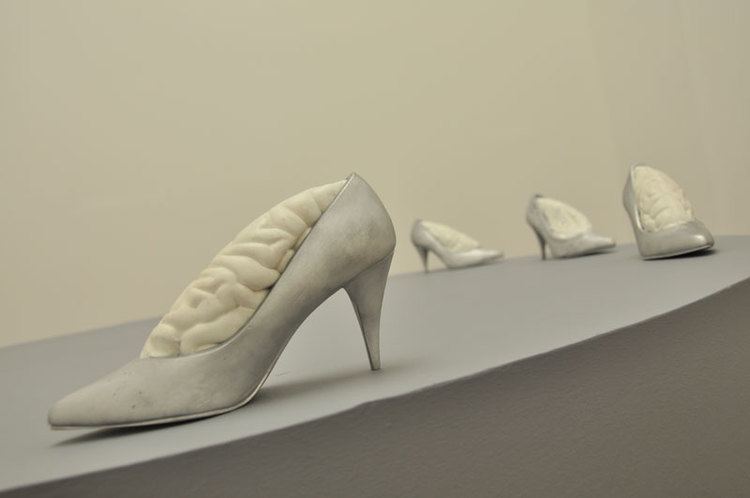 | ||
Movement Conceptual Art, Feminist Art Books Adventure in Technos Dystopium | ||
ORSHI DROZDIK ORSOLYA SEJTMOZGÁS
Orshi Drozdik (born 1946 in Hungary) is a feminist artist based in New York City. Her work consists of series of installations exploring connected themes, sometimes over many years and undermines the traditional erotic representation of woman. It often exposes the hidden social issues in the system, countering a wide range of representation of "facts and scientific truth” in the discourse of art-, political-, medical- and science history and exposing contemporary and historic contradictions and discrepancies. Starting in the 1970s with body art, working with her own body, in the form of performance art broadened her critical interest to normative representation of female body as a nude. Later she extended her method of work and theories to different fields of mediums and concepts.
Contents
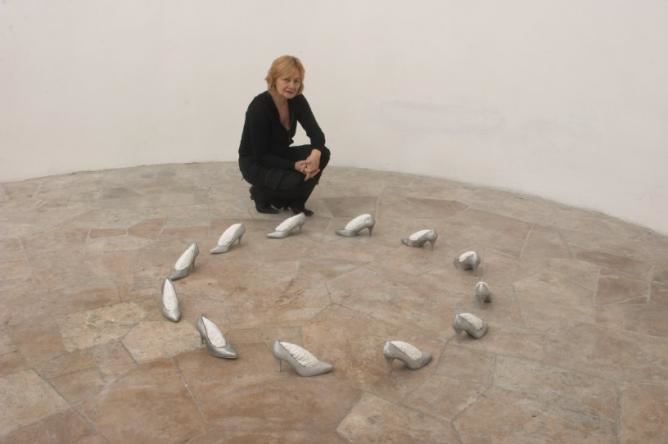
Biography
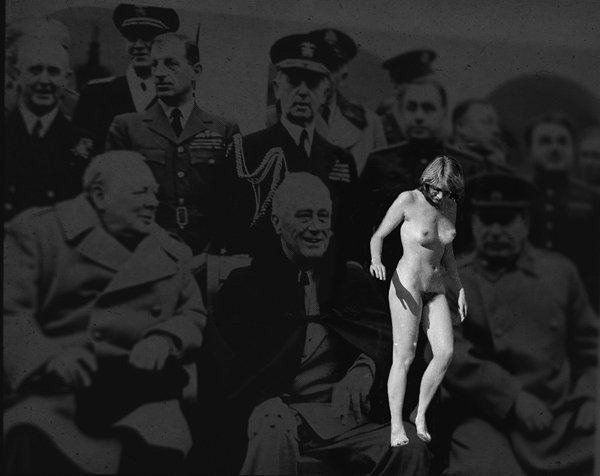
Drozdik grew up in Abda and Győr in Hungary. Her mother with her family were living in Pozsony (today Bratislava) in 1945, and were stripped of their citizenship and property by the Beneš decrees without compensation and forced to move. The governmental party labeled her father, as most of middle class intellectuals, class enemy and his property were confiscated. In 1956, after her father's death, she decided to be an artist. With the support of her mother, who raised her with a sister and brother alone, she started to learn formal drawing and painting in an evening drawing study group.
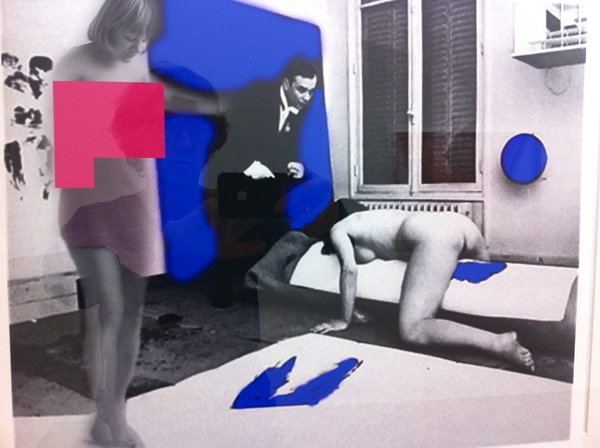
Drozdik studied art at the Hungarian University of Fine Arts from 1974–77. In the mid seventies she found her own voice by turning against the patriarchal educational and political dictatorial power. From 1975 she exhibited in Budapest and worked in association with the "Rozsa" (Roses), a young artists' post-conceptual group (1976–78). In 1978 married Andreas De Jong, left Hungary, lived in Amsterdam, 1979 divorced and moved to Vancouver, Toronto, 1980 to New York. She lived with Patrick McGrath, the writer, in Vancouver, Toronto and New York between 1979-1991. Drozdik was working in association with artist group Colab in the early 1980s. In the 1980s, she showed her work extensively in New York and internationally, in both galleries and museums. Starting in late 90s also exhibited extensively in major Hungarian and Central European institutions too. Her participation has been selected to take part in exhibitions of work by Hungarian artists. 3 by 3 from Hungary (1996) at the Center for Curatorial Studies, New York. and The New Arrivals: 8 Contemporary Artists from Hungary (2011) at the Palais des Beaux-Arts, Brussels.
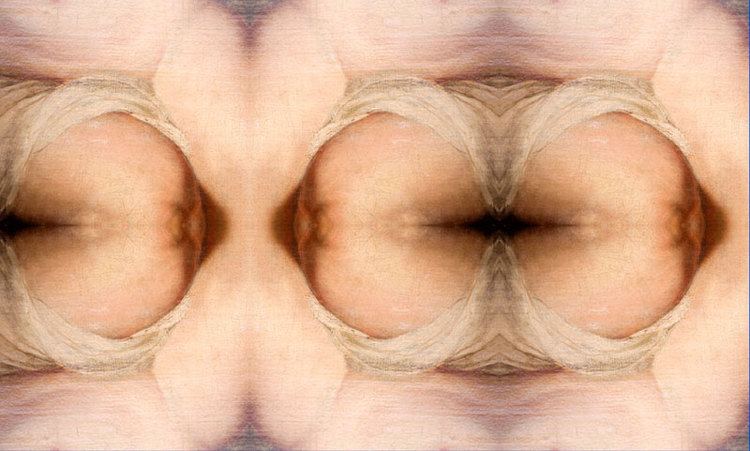
In the years of 2000 had major retrospective exhibitions showing different aspects of her work: Adventure and Appropriation 1975-2001 were exhibited in LUMU, [3] Ludwig Museum and Museum of Contemporary Art, Budapest 2001-02, Passion After Appropriation in Museum of Contemporary Art [4], and in The Art Pavilion in Zagreb, Croatia, 2002, Individual Mythology - Medical Venus - Young and Beautiful, Municipal Museum of Art, Győr, 2003, The Other Venus, MODEM 2011, [5], Contemporary Art Center [6]. Debrecen, Hungary. In 2006 Drozdik published a book titled Individuális Mitológia, konceptuálistól a postmodernig, (Individual Mythology From Conceptual to Postmodern Gondolat Publishing IBNS 9639567795) a summary of her thoughts, methodology and work process, focusing on her starting point the 1970s conceptual movements in Hungary .
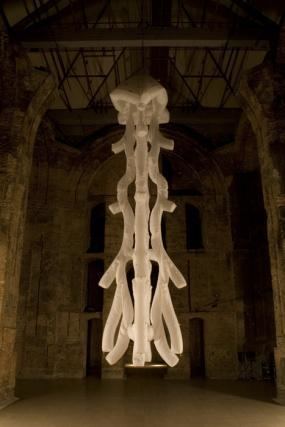
Her awards include, hu:Munkácsy-díj Munkacsy Mihaly Award, (2003) Kondor Béla Award, Budapest (1976). Prince Bernhard Fonds [7] Award, Amsterdam (1985). New York Foundation for the Arts, New York, USA (1995). Pollock-Krasner Foundation, INC. Grant, USA (1990), Gordon Matta Clark Foundation Award USA, (1990). Fondation Cartier, [8] France (1991) and a Pollock-Krasner Foundation, INC. Grant, USA (1993). She is member of SZIMA [9] Széchenyi Academy of Letters and Arts (2015) [10].
Work
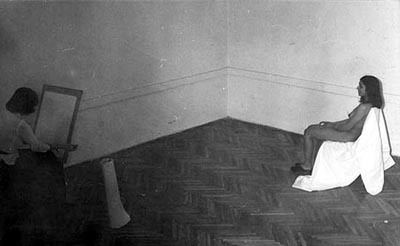
Her works Individual Mythology (1975–77) and Nude model (1977), comprising performance, photography, offset prints and drawings, were exhibited in Budapest. In this series of work she started to deconstruct the representations of female body based on her original concept named Image Bank, in Hungarian Képban elmélet (1975), in which she defined her methodology using existing representations to unfold and reinterpret meaning. Inspired by Valéria Dienes, [11], the philosopher and dancer, she was able to link her woman point of view to the early feminist movement, that was very powerful in Hungary before WWII. A harbinger in the Eastern Block, Drozdik focused on the methodology of representation - using the early 20 century “Free Dancer” movements in Hungary as a starting point - to build a discourse of feminist point of view in art. The Pornography (1978) series was completed in Amsterdam, I Try To Be Transparent (1980) [12], performance and the Double (1980) in Toronto and Genius (1989) [13] in New Museum, New York.
Her installation series Adventure in Technos Dystopium (1984–1993) deconstructed scientific representations of truth. For this series the artist created a fictional 18th century female scientist called Edith Simpson. Themes she explored were: the romanticizing of disease and the taxonomic formalism of Carl Linnaeus. From 1989 she used models of her father's brain as part of sculptural installations.
Her installation series entitled Manufacturing the Self (1993–97) is a deconstruction of medical representations of the female body. Her 1993-04 exhibition Medical Erotic, part of the Manufacturing the Self series, featured a cast of the artist's body alongside photographs of a medical wax-work figure and a fictional journal. The installation Manufacturing The Self, Brains on High Heels (1992) is a rubber cast of a brain put into a pair of high heels. Exhibited first in Sydney Biennial in 1992/3.
Building on her earlier conceptual painting series Art history an Me (1982) she created a newer series of critical reference to art history titled Lipstick Paintings ala Fontana (2002–06) in which the surface of canvases are punctured with lipstick. The series of digital prints Venuses, Drapery and Bodyfolds (2000–2007) featured fragments of draperies and naked women from the history of painting. Drozdik series of exhibitions titled All Over Now Baby Blue were exhibited in from 2013–15, Stripes Ala Sol Levitt in 2015.
